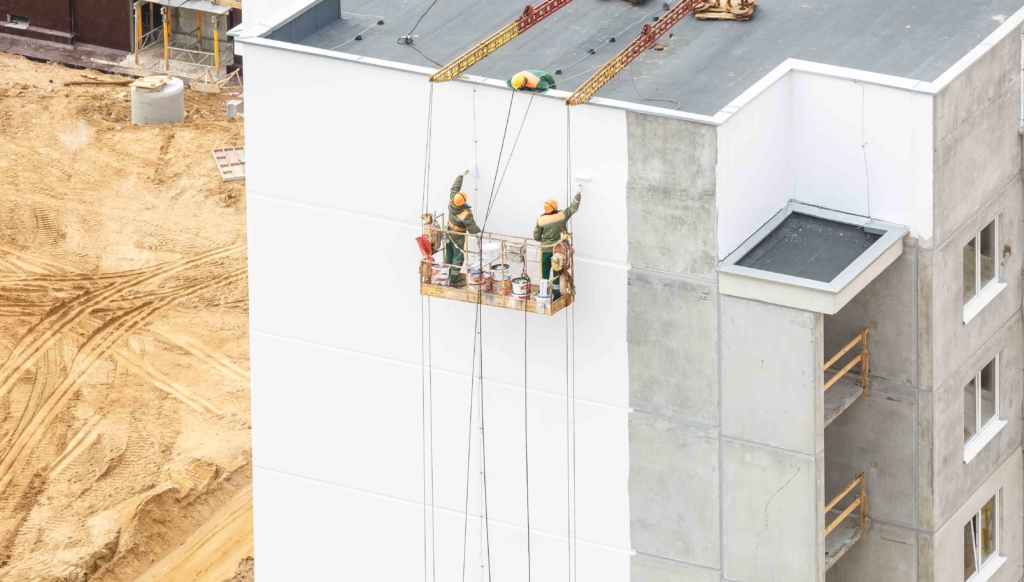
Extending the lifetime of a building requires a strategic approach that includes protective measures for both indoor and outdoor environments. Proactive maintenance, sustainable materials, and energy-efficient designs are essential for improving building performance, sustainability and longevity. By integrating protective strategies, property owners and developers can enhance their assets while aligning with BREEAM, LEED and own ESG strategies.
Indoor protective measures for sustainability and efficiency
-
Optimized HVAC and ventilation systems
Efficient HVAC systems are critical for maintaining indoor air quality and preventing structural damage caused by condensation. Regular system optimization ensures energy efficiency while reducing operational wear and tear.
- Tip: Use performance monitoring tools to identify inefficiencies early, aligning with BREEAM and LEED standards.
-
Durable materials
Using resilient and wear-resistant materials with high thermal performance enhances occupant comfort, lowers energy use, and protects against damage to indoor vulnerable parts of the building.
- Tip: Identify all vulnerable areas within the building and select adequate materials, to maximize durability and efficiency in line with BREEAM standard principles.
-
Moisture management
Uncontrolled humidity can lead to structural damage and mold growth. Integrating advanced insulation and dehumidification systems helps manage moisture effectively, and periodic inspections should be included as part of the maintenance procedure to ensure ongoing protection and early detection of potential issues.
- Tip: Incorporate moisture barriers and dehumidifiers to maintain optimal indoor conditions.
Outdoor protective measures for longevity
-
Weather-resistant facades
Facades play a critical role in protecting buildings from environmental factors and weather extremes. Advanced cladding materials and coatings can extend the lifespan of exteriors by resisting degradation effects such as UV damage, thermal expansion or corrosion.
- Tip: Perform regular inspections to maintain facade integrity, and ensure compliance with BREEAM in-use certifications.
-
Green infrastructure
Green roofs and permeable pavements help reduce stormwater runoff and mitigate the heat island effect. These features enhance structural resilience while contributing to carbon sequestration.
- Tip: Use drought-resistant plants and native species for sustainable landscaping and better water management.
-
Advanced drainage systems
Effective stormwater management prevents foundation erosion and waterlogging. Integrating smart drainage solutions, such as bioswales and rainwater harvesting systems, ensures long-term protection.
- Tip: Incorporate these systems into your construction and landscape strategy that also align with LEED water efficiency standards.
Enhanced protective measures extend the lifespan of structural and mechanical systems, minimizing repair costs, while sustainability measures help reduce carbon emissions and energy consumption. Additionally, ensuring compliance with green certifications requirements such as BREEAM and LEED supports long-term environmental and operational efficiency.
Proactively addressing indoor and outdoor protective measures ensures buildings remain resilient and efficient over time. By implementing sustainable strategies, property owners can enhance building performance, increase market value and align with modern sustainability standards.
At BuildGreen, we provide tailored services to improve the longevity and performance of real estate projects. Contact us to learn more about sustainable solutions for your buildings in Romania and beyond.

